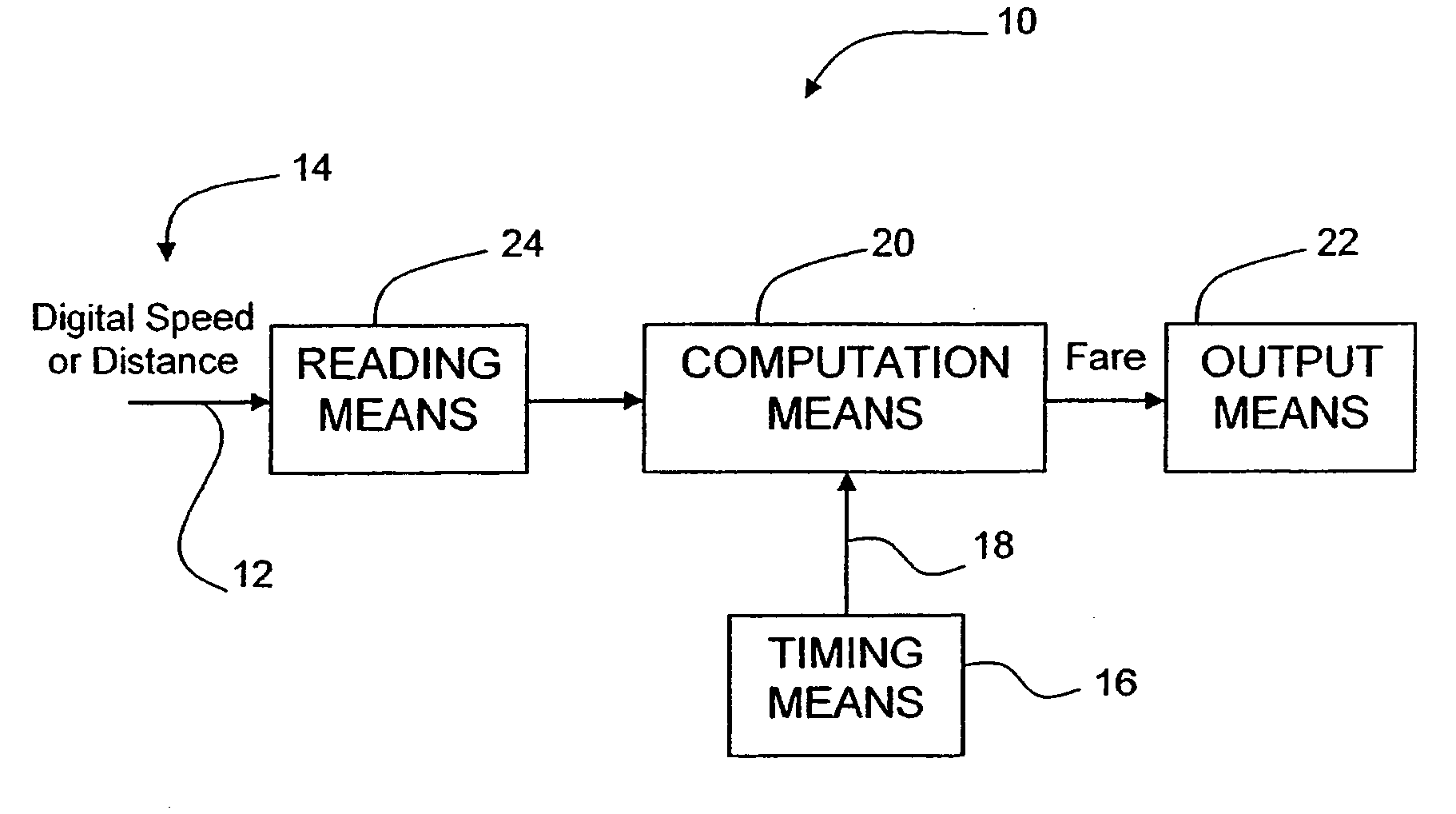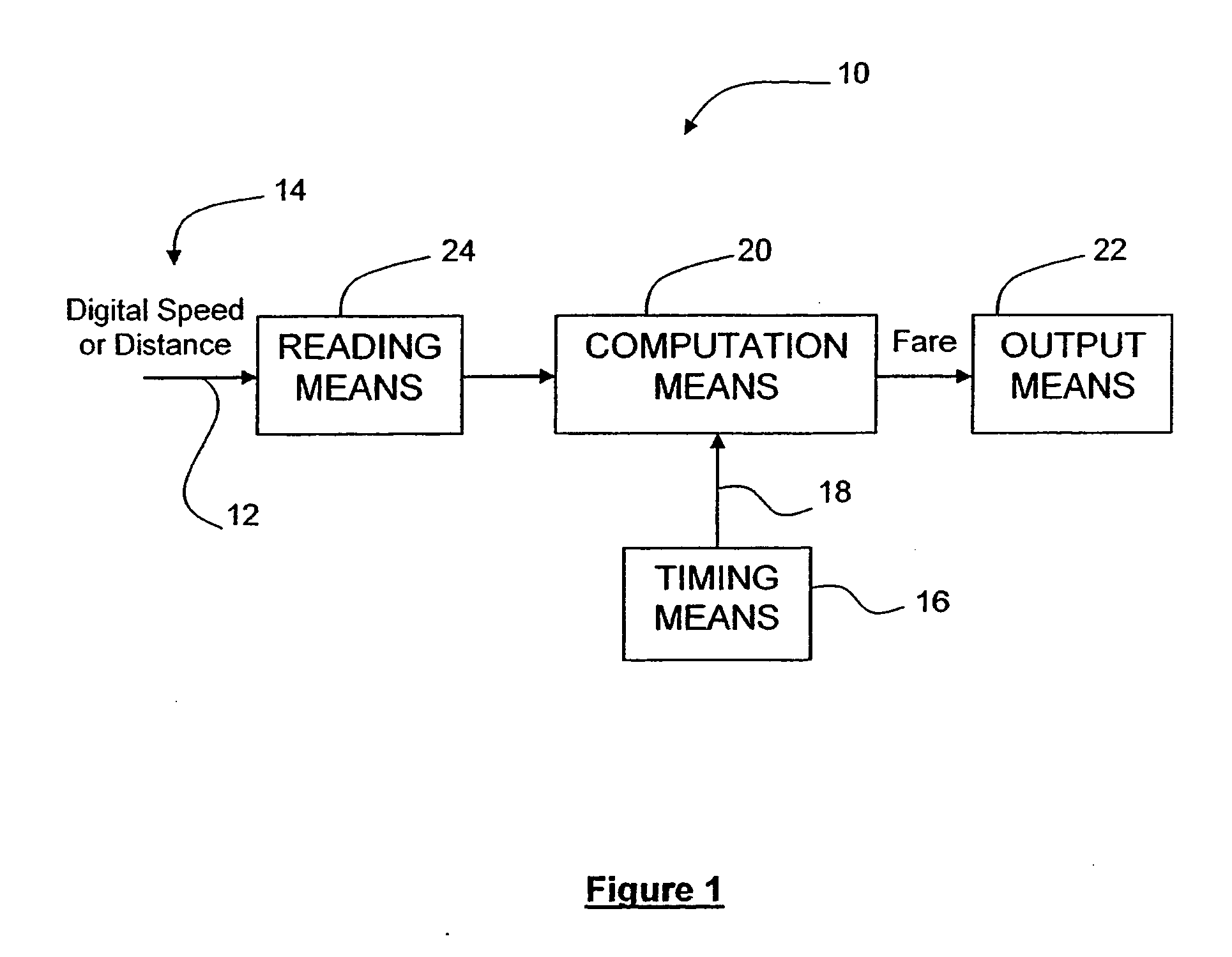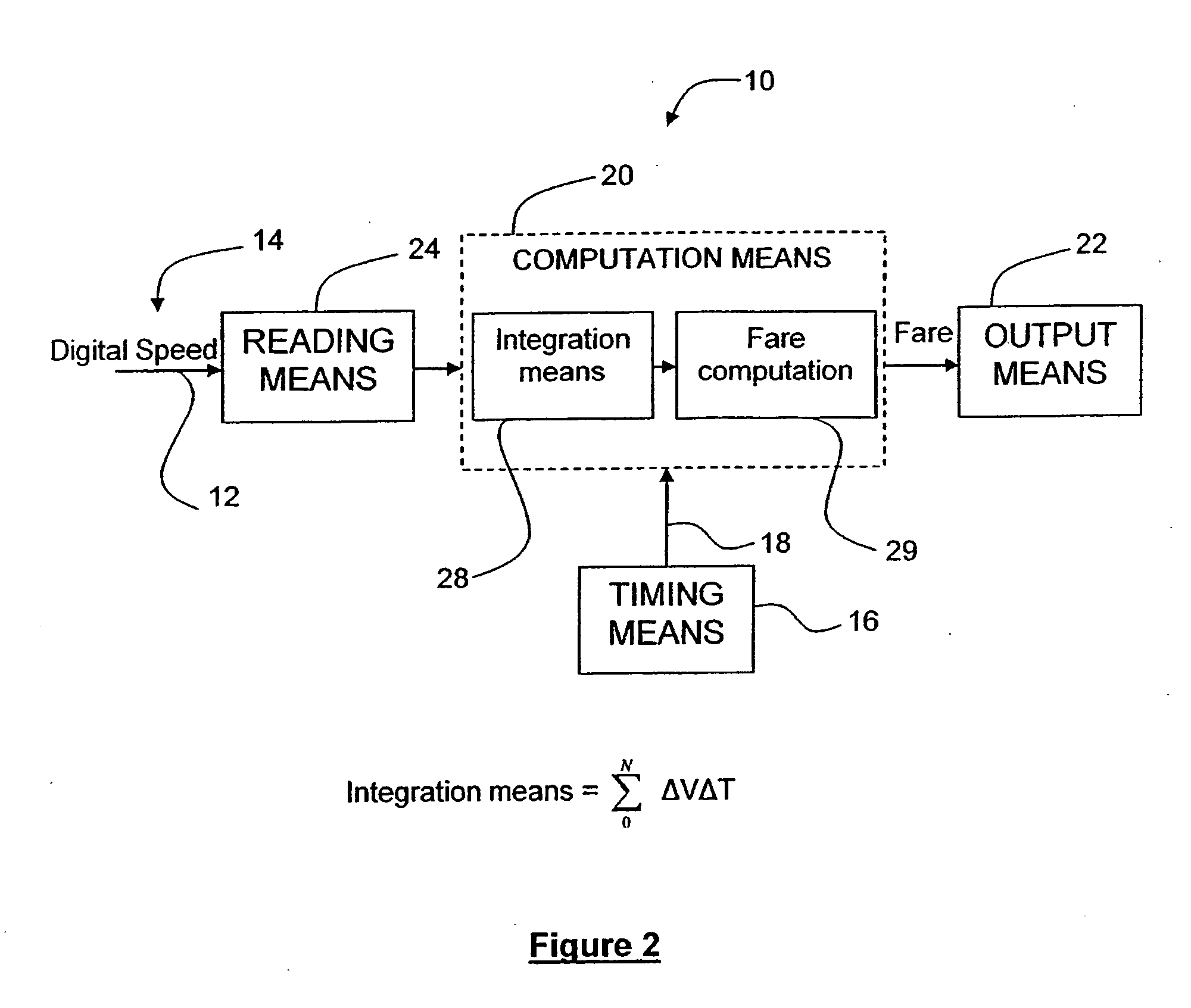Taximeter using digital speed or distance as input
a technology of digital speed or distance and taximeter, which is applied in the field of electric taximeter, can solve the problems of recommending hooking other devices to these signals, and becoming the most difficult part of taximeter installation, and affecting the installation of taximeters
- Summary
- Abstract
- Description
- Claims
- Application Information
AI Technical Summary
Benefits of technology
Problems solved by technology
Method used
Image
Examples
Embodiment Construction
[0018]In the following description, similar features in the drawings have been given similar reference numerals and in order to lighten the figures, some elements are not referred to in some figures if they were already identified in a preceding figure.
[0019]Referring to FIG. 1, there is shown an electronic taximeter 10 for a vehicle (not shown) using a serial bus multi bit digital data signal 14 providing one of speed data and distance data according to the present invention. The electronic taximeter 10, according to the invention, advantageously accepts a digital speed or distance signal at its input. Indeed, the taximeter 10 is provided with a digital input 12 for receiving one of the speed data and the distance data. The taximeter 10 has reading means 24 that are able to accept, read and interpret the digital input 12. The taximeter 10 is also provided with timing means 16 which provide timing data 18. The taximeter 10 also has computation means 20 operatively connected to the r...
PUM
 Login to View More
Login to View More Abstract
Description
Claims
Application Information
 Login to View More
Login to View More - R&D
- Intellectual Property
- Life Sciences
- Materials
- Tech Scout
- Unparalleled Data Quality
- Higher Quality Content
- 60% Fewer Hallucinations
Browse by: Latest US Patents, China's latest patents, Technical Efficacy Thesaurus, Application Domain, Technology Topic, Popular Technical Reports.
© 2025 PatSnap. All rights reserved.Legal|Privacy policy|Modern Slavery Act Transparency Statement|Sitemap|About US| Contact US: help@patsnap.com



